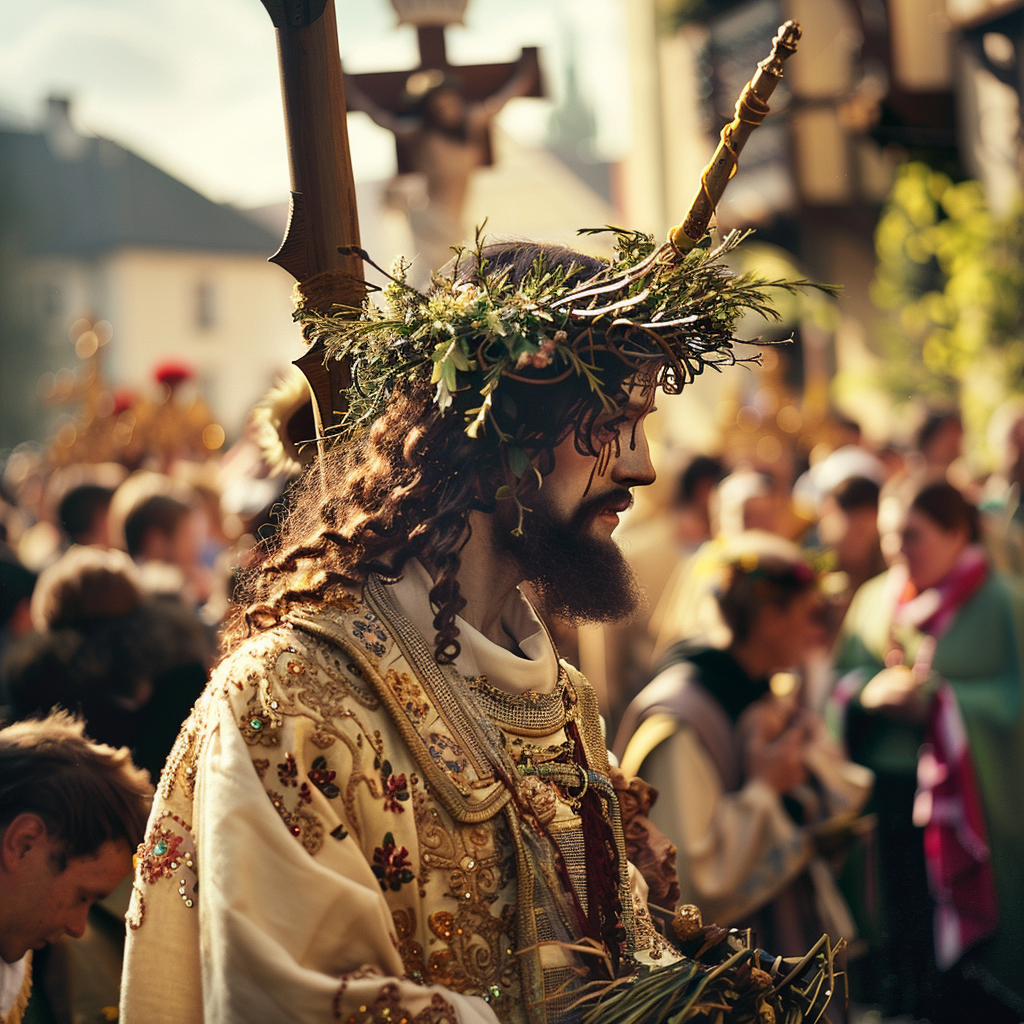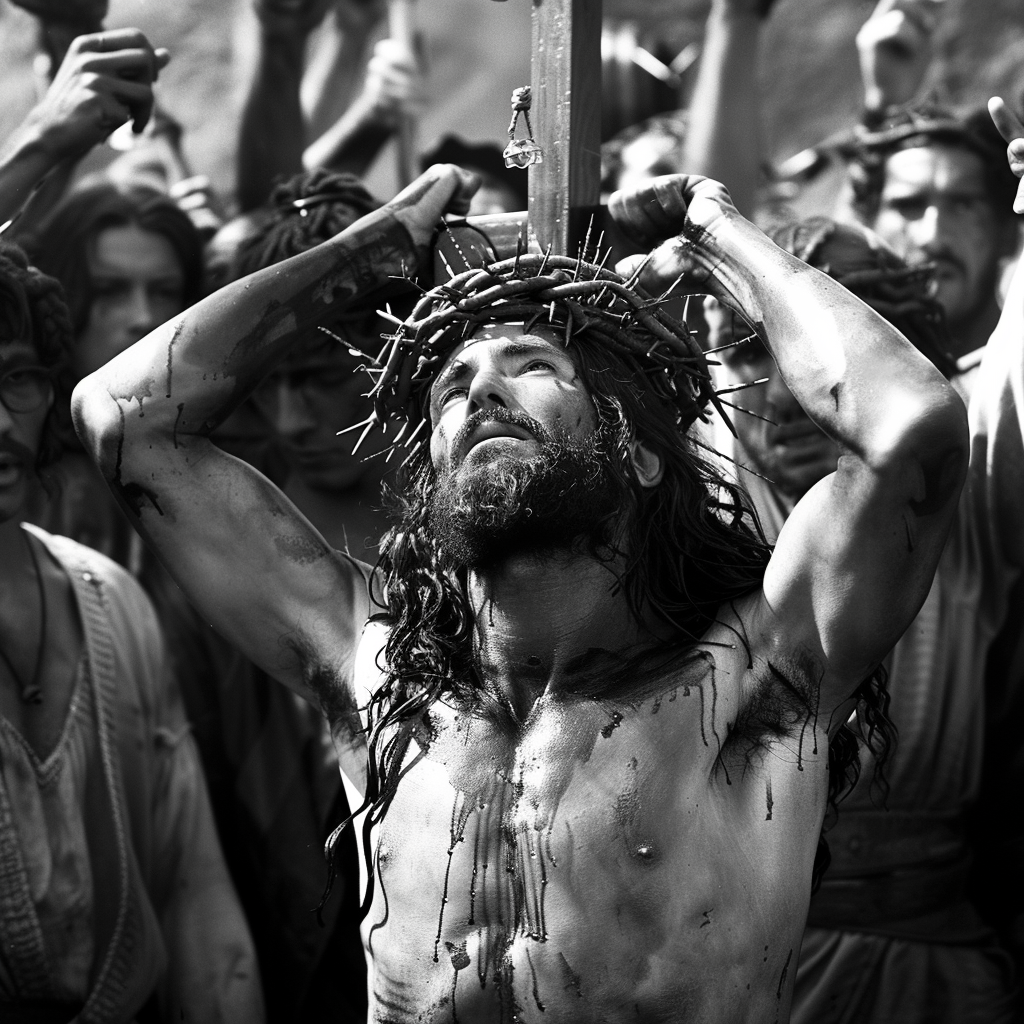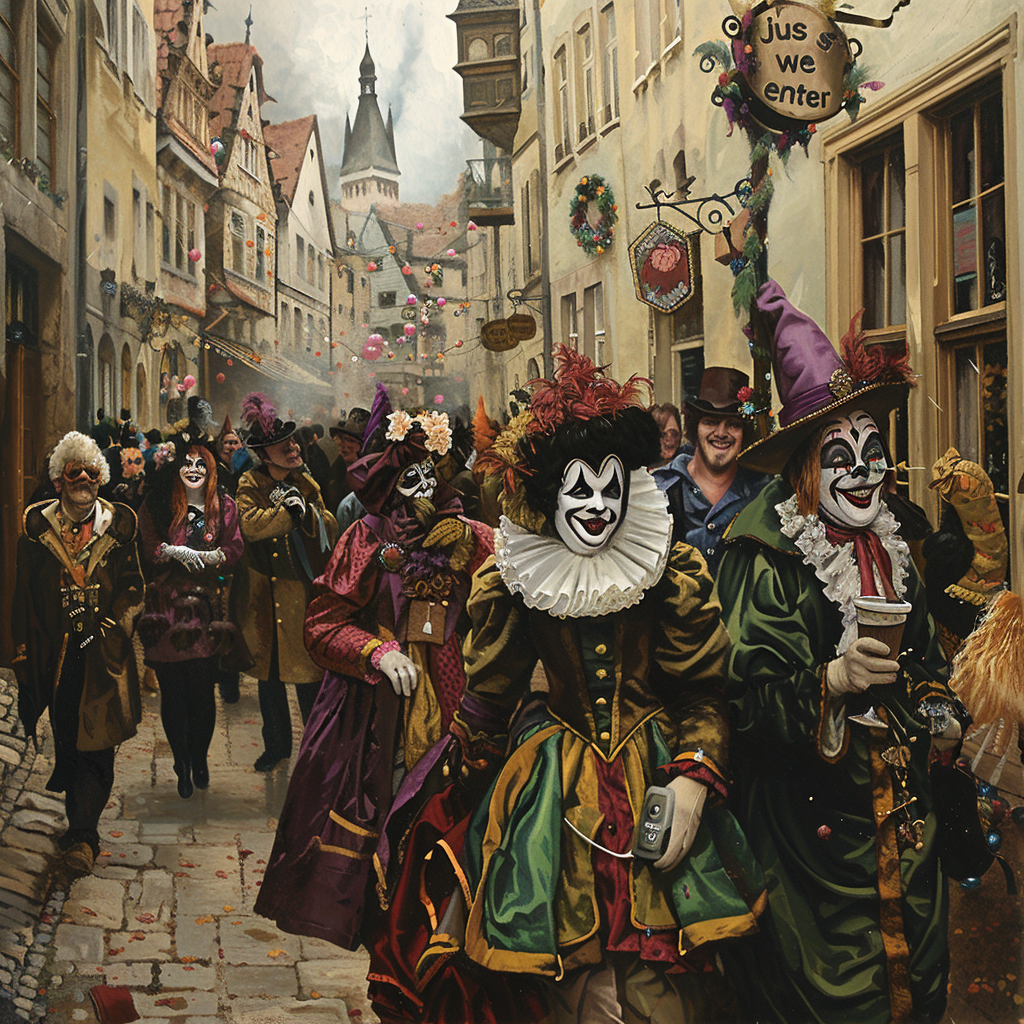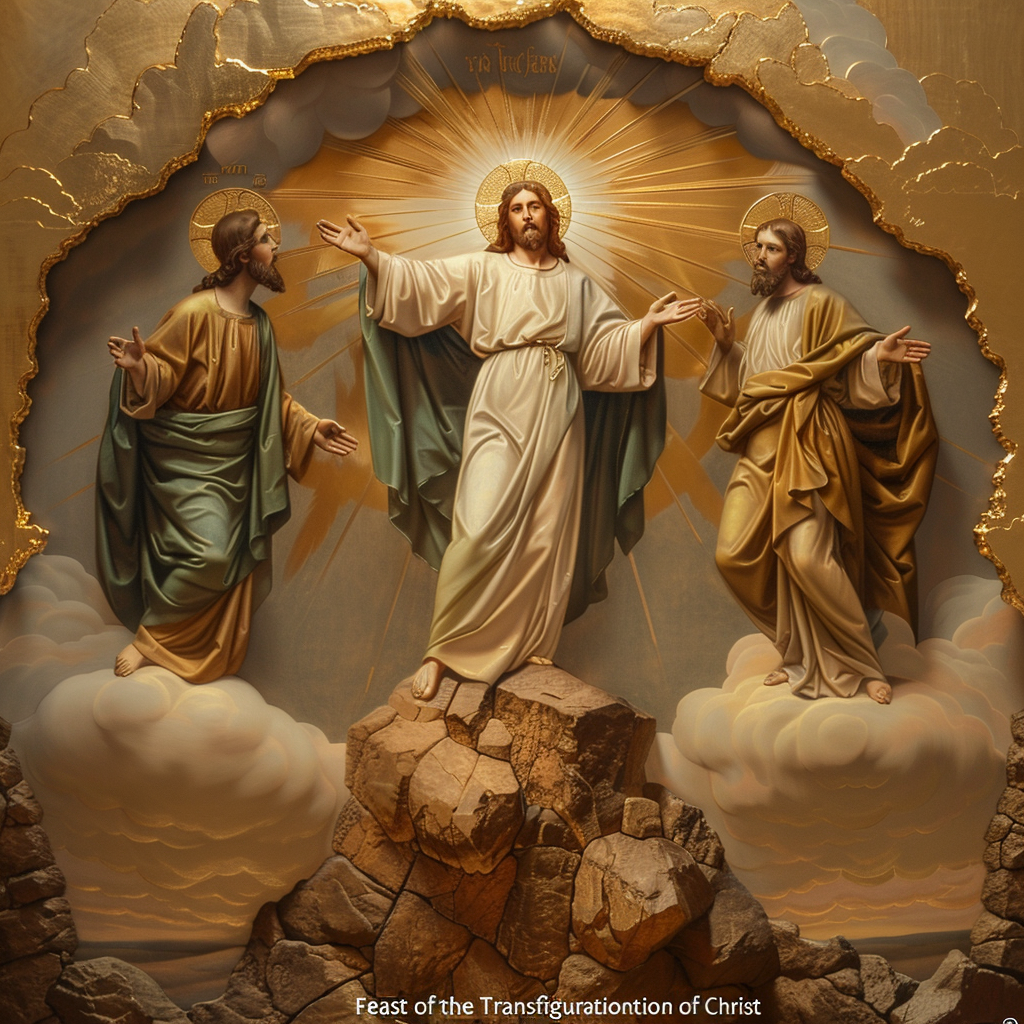Many of Germany’s public holidays stem from religious celebrations, which vary from state to state and sect to sect. In addition to the major Christian holidays, such as Easter and Christmas, there are many other cultural events, including regional folk festivals, music festivals, and film festivals. This article details the types of German festivals and holidays and their origins.
German festivals and holidays: a colorful celebration of culture
The German word “Feiertag” refers to both festivals and holidays. This is probably because, with the exception of New Year’s (January 1), Labor Day (May 1), and German Unification Day (October 3), which are legal holidays, most public holidays in Germany are festivals or celebrations related to religion.
Some religious holidays are recognized by both Catholics and Protestants, while others are denominationally specific. Religious holidays that are recognized by both sides are Passion of the Christ, Easter, Ascension of Christ, Advent, and Christmas, which are holidays throughout Germany. However, Magi Day, the Feast of the Presentation of Christ, the Assumption of Mary, and All Saints’ Day are only recognized as holidays in predominantly Catholic areas, and even then, they vary slightly from state to state. The reason for this variation is that Protestants oppose the veneration of saints and relics, including the veneration of Mary, which has no basis in the Bible. In predominantly Protestant areas, Reformation Day (October 31) is recognized as a holiday. Another reason for this is that religious holidays are not statutory, i.e., national, but are set by the states or municipalities.
In addition to religious festivals, Germany has numerous folk festivals related to regional traditions, as well as various music, theater, and film festivals. There are also many celebrations in personal life. For example, birthdays, baptisms, Namenstag (the birthday of a patron saint), school entrance, weddings, wedding anniversaries, confirmations, and first communions. In the following, we’ll break down Germany’s festivals and holidays into several types.

Religious festivals
Like other Christian-based European countries, Germany has many festivals with religious origins. They vary slightly from state to state, depending on whether the state is Catholic or Protestant, and there are also so-called mobile festivals, which often throw us for a loop because the dates change from year to year.
Fixed feast days are those that have a constant date, such as Christmas (December 25), Magi Day (Three Kings’ Day, January 6), the Assumption of Mary (August 15), and All Saints’ Day (Chronicles Day, November 1). On the other hand, those whose dates change from year to year, centered on Easter, are called movable festivals.
The basis of a movable festival is the Resurrection, and the date of Easter is set as “the first Sunday after the vernal equinox (March 21) and after the full moon.” If the full moon falls on a Sunday, then the following Sunday is Easter.
The reason for this complicated way to date Easter is as follows Jesus was crucified on the eve of Passover (Friday), the Jewish High Holy Day, and resurrected on Sunday, the third day. If you convert that to the current calendar, you get the above calculation. As a result, the date of Easter changes from year to year, falling as early as the end of March and usually in April. All of the other traveling festivals are scheduled a few days after Easter, and the dates change every year in accordance with Easter.
Easter
Easter (Ostern) celebrates the resurrection of Jesus and is the most important major Christian holiday, along with Christmas, which honors the birth of Jesus. Easter is celebrated over two days: Easter Sunday (Ostersonntag) and Easter Monday (Ostermontag).
The early church combined the celebration of the resurrection with the Jewish holiday of Passover. However, after a debate over the date of Easter, the Council of Nicaea in 325 decided that the first Sunday after the full moon following the vernal equinox would be Easter. When the Germanic peoples converted to Christianity, it was combined with the spring festivals that had previously been celebrated around the vernal equinox and became what it is today. The Spring Festival originally honored Austrô, the goddess of spring in ancient Germanic mythology. The German word for Easter, “Ostern,” comes from this goddess’ name.
Thus, Easter became a pagan celebration with Christian connotations: not only did it celebrate the resurrection of Jesus, but it also signaled the end of a harsh winter and the arrival of spring, a time of renewed life. In reality, Easter is a very joyful festival, timed to coincide with the end of the hard Lenten season.
In Germany, Easter is largely a children’s festival, and the celebrations are more domestic than social. Many neighborhoods have city parades and take children to bonfire parties on Easter Sunday evening. The next morning, children receive chocolate bunnies and search gardens and forests for Easter eggs hidden by the “Easter Bunny” overnight. Symbolizing rebirth and fertility, eggs are gifts and offerings to the gods, and they have great significance as a source of life. When the weather is nice, family outings to the forest are often organized.
You can also find ancient customs in many regions. For example, in Hamburg, bonfires are lit to welcome the coming spring, and in the woodlands of Westphalia and Schwarzwald, villagers roll burning wheels down hillsides, which are associated with the belief that if the wheel reaches the bottom of the hill in flames, it will bring a good harvest.

Christ Passion Day
The Friday before Easter is Christ Passion Day, or Karfreitag in German. It marks the day that Jesus was crucified in Jerusalem and is meant to remember the suffering and death of Christ. It’s a day of mourning and fasting, especially for Protestants.
For four days, from this day until Easter Monday, government offices, art galleries and museums are closed in Christian countries, including Germany, with few exceptions. Shops have a four-day skipping holiday with Easter in the middle.
Lent and Ash Wednesday
For Catholics, the time between Christmas and Easter is divided into two main periods: the period leading up to the Feast of Corpus Christi and Lent.
Lent refers to the 40 days leading up to Easter, excluding Sundays, and is also known as the fasting season or Great Lent. The German word for Lent is “Fasten,” which also means “fasting.
Lent was created to commemorate Jesus’ 40 days of fasting in the wilderness, first after his baptism by John in the Jordan River and then in the wilderness, just before he began preaching to people. Christians are supposed to spend these 40 days of the Great Fast overcoming sin and lust in order to prepare for Easter.
The first day of Lent is the Wednesday of the seventh week from Easter and is called “Holy Day” or “Ash Wednesday” (Aschermittwoch). On this day, ashes are overwritten, penitence is practiced, and one enters into the practice of penance.
Whether or not you do so, the custom of not celebrating during this time, such as weddings, is deeply rooted in Christian countries. Devout families follow the custom and minimize meat consumption during the fast. However, it’s okay to eat any amount of fish.

Karneval
Karneval is celebrated in many parts of the world just before entering Lent. In other words, it’s a few days of revelry and fun right before the harder days of Lent begin. It culminates in February, usually around the same time as Easter.
Etymologically, carnival comes from the Latin word carne vale, which means “to abstain from meat” or “to stop eating meat”. Therefore, it’s usually translated as a festival of slaughter. However, carnival is primarily a name used in the Middle Rhine region, while in southwestern Germany it’s called Fastnacht or Fasnet, and in Bavaria it’s called Fasching.
Carnival was originally a festival of the Roman agricultural god Saturnus, which was later adopted by Christianity. Since Christianity didn’t have any festivals in the first place, it adopted many of these cheerful pagan festivals as a way to increase the popularity of Christianity among the people.
The specific events, nature, and meaning of carnival varies from region to region. Carnival originally belonged to Catholic regions. As such, the festival didn’t take hold in northern and eastern Germany, where Protestants predominate. However, its Catholic association doesn’t mean that Protestants in Germany don’t participate in carnival. In the Rhineland region, there’s a saying that goes, “Whoever doesn’t be a fool at Carnival is a fool all year round,” and today, everyone takes part in the madness.
Officially, the preparations and planning begin at 11:11 am on November 11th. It probably originated from a pagan tradition of celebrating St. Martin’s Day, the patron saint of bars and teetotalers, on November 11, though the authenticity of this is unclear.
But the culmination of the pour and drink frenzy comes on the Sunday immediately preceding Lent, when the most spectacular of all is the giant cigar parade. In Cologne and other cities along the Rhine and in southwestern Germany, it’s called Rosenmontag, which means “Mad Monday,” and in Munich it’s called Faschingsdienstag, which means “Tuesday before Lent.
Carnivals are celebrated in Cologne, Düsseldorf, Aachen, Bonn, Mainz, Munich, and Münster, with masked balls, private parties, open-air theater, marches, and a “Parliament of Fools” that rewards the person with the most ridiculous costume and the silliest speech. Most of the festivals are masquerade festivals, so masks are the most important part of the parade. In Baden and Württemberg, witches with brooms usually appear in the parades. The idea is that they sweep away the winter in advance of Easter, thus chasing away the harsh winter and ushering in the new life of spring.
Carnival gives us the opportunity to enjoy life, free from the bondage of everyday hardships and unspoken conventions, and to mock others, such as politicians and governments, through falsehoods and exaggerations, without having to take any responsibility for them.
However, as soon as Tuesday arrives, the fun ends and the somber Lent begins, which begins with Ash Wednesday and lasts until Easter.

Ascension of Christ
On the 40th day after his resurrection, Jesus ascended into heaven, and the feast day created to commemorate this event is Christi Himmelfahrt (Ascension of Christ). Thus, Ascension Day falls on Thursday, 40 days after Easter.
And the place where Jesus is said to have ascended is on the Mount of Olives in Jerusalem, where the rocks have indented footprints that look like he kicked the ground very hard and jumped. The canon of the Ascension of Christ has provided a theme for a great deal of religious art.
Advent of the Holy Spirit
The Sunday 50 days after Easter is a festival called Pfingsten, or the Feast of the Holy Spirit, or Pentecost. Like Easter, Pfingsten is celebrated on two days: the first day is the Sunday of Pfingsten, called Pfingstsonntag, and the second day is the Monday of Pfingsten, called Pfingstmontag.
Pentecost was originally a Jewish holiday, a time to offer grain to God and give thanks for a good harvest. “From the day after the Sabbath on which you waved the sheaf of grain to the day after the seventh Sabbath, which falls on the seventh day of the week, you shall count seventy days. Then you shall offer a new grain offering to the LORD” (Leviticus 23 in the Old Testament).
Jesus’ disciples were Jews, so naturally they celebrated Pentecost as a Jewish rite. On one occasion, when the believers were gathered in one place for Pentecost, suddenly there came a sound like a rushing wind from heaven, and it filled the whole house where they were sitting. Then there appeared tongue-like things that split like flames of fire and descended on each person. Then their hearts were filled with the Holy Spirit, and they began to speak with other tongues as the Spirit gave them utterance. The New Testament book of Acts tells us that after this miracle, all those who had come to Jerusalem from those regions were stunned and looked at the disciples of Jesus with amazement, for they began to speak in Persian, Mesopotamian, Cappadocian, Phrygian, Egyptian, Libyan, Roman, Cretan, Arabian, and other languages, even though they were only villagers from Galilee.
After this miracle, Pentecost became a major Christian celebration in a completely different sense from Judaism. It symbolizes the spread of Christianity across ethnic and linguistic barriers.
This is why the same celebration is sometimes called Pentecost and sometimes called the Feast of the Holy Spirit, the former inherited from Judaism and the latter in light of its new significance in Christianity.
Like Easter, Advent is a family affair. If the weather is nice, people often have picnics and, if possible, travel a little further south, over the Alps, in the warm sunshine.
It’s also customary to celebrate this day as Father’s Day. On this day, men go away and enjoy the day alone. Naturally, they drink a lot of alcohol. Even if you’re a hard-nosed wife, you shouldn’t get upset if your husband comes home late because he’s too drunk.

The Feast of the Transfiguration of Christ
The next Sunday of Advent is a traveling feast day called Trinity Sunday, and the Thursday after that is the Feast of the Corpus Christi (Fronleichnamsfest). In Latin, it is called Corpus Christi, where corpus is the body and Christi is the possessive form of Christus.
Corpus Christi is an important Catholic feast that commemorates the institution and mystery of the Eucharist, which consists of the body and blood of Christ. As such, it is a holiday in Catholic areas only, and not a holiday in Protestant areas. People come in large processions to see the altar consecrated anew. Entire cities and towns are filled with onlookers, house windows and gates are decorated with green birch branches, and the roads are lined with beautiful floral carpets.
Day of Atonement
The Wednesday immediately preceding the first Sunday of Advent is the Day of Atonement (Buß- und Bettag). It’s a day of penance and prayer, honoring those who died in war, and is a holiday only in the state of Saxony. Whereas almost all of the traveling festivals are dated around Easter, the Day of Atonement is based on Advent.
November 1 is a feast day in Catholicism that honors all saints, especially those whose feast day is not assigned in the church calendar, and is called All Saints’ Day or Allerheiligen. In Germany, all deceased spirits are also honored on this day, and family graves are refurbished.
Advent, the four weeks before Christmas, is a time of celebration and anticipation for the birth of Christ. Christmas trees are put up in stores, streets are decorated with colorful neon lights, and homes, workplaces, and schools are filled with the excitement of gift-giving.
On the first Sunday of Advent, the whole family gathers to put an Advent wreath on the dining room table and decorate it with four candles. Each week, one candle is lit in preparation for the coming Christmas. The beginning of Advent is also the beginning of the church year.
December 6th is St. Nicholas’ Day, which is not a public holiday. More commonly known to us as Santa Claus, Nicolaus was a saint who protected children in Asia Minor around the end of the third century.
It’s a day that children here look forward to all year round, as it’s said that Nicolaus will visit them with gifts on this night. Children still believe that he comes from the North Pole in a sleigh pulled by eight reindeer, dressed in a red robe, hat, boots, and white beard, carrying a large sack, and sneaks up the chimney, leaving presents in the shoes of the good and brave children and a stinging hawk for the greedy ones.
So the night before, children put as many stockings as they can by the window and go to bed without locking the door. These stories are pretty much the same as what we know about Santa Claus coming to visit on Christmas Eve evening. And the truth is that children already know that neither Nikolaus nor Santa Claus brings gifts, but that their parents do.
Christmas is a family celebration that most families enjoy quietly at home. Germans are lively and bustling in the days leading up to Christmas, but the streets are actually very quiet on Christmas Eve and on Christmas Day.
The 25th and 26th are officially public holidays, and many businesses are closed on the 24th or only work in the morning. Most Germans host a family feast at home on the evening of the 24th, and spend the 25th enjoying a big Christmas meal of turkey or carp, and visiting relatives in the afternoon.
The period from Christmas to New Year’s is not a public holiday and most people work only in the morning. The festive atmosphere of Christmas lasts until the night of the 31st, the last day of the year. This New Year’s Eve celebration is commonly known as Silvester. On this night, family and friends gather to celebrate. Many hotels and restaurants organize vigil parties and the atmosphere is very merry and lively with people. The festivities culminate at midnight, when all the lights go out and the room becomes pitch black, and then suddenly the lights come back on and the new year begins. At the beginning of the new year, firecrackers are set off from house to house, champagne is popped, and people wish each other good health and luck. Afterward, a lively feast of drinking, singing, and dancing usually continues until 3 or 4 am.
The Christmas period continues until January 6, Magi Day. This day commemorates the three wise men who were led by a star to Bethlehem, where they learned of the Savior’s birth and worshiped the baby Jesus in a stable. In German-speaking countries, this day is also known as the Feast of the Holy Three Kings (Heilige Drei Könige). This is the elevation of the Three Doctors to the status of Three Kings.
It used to be traditional for children to dress up as the three holy holy men and go door-to-door on this evening, asking for sweets and candy. However, this tradition has largely disappeared, and today it is only practiced in a few provinces, including Bavaria.
The predominantly Catholic states of Bavaria and Baden-Württemberg, and the exceptionally Protestant state of Saxony-Anhalt, recognize this day as a holiday.
 I’m a blog writer. I want to write articles that touch people’s hearts. I love Coca-Cola, coffee, reading and traveling. I hope you find happiness through my writing.
I’m a blog writer. I want to write articles that touch people’s hearts. I love Coca-Cola, coffee, reading and traveling. I hope you find happiness through my writing.